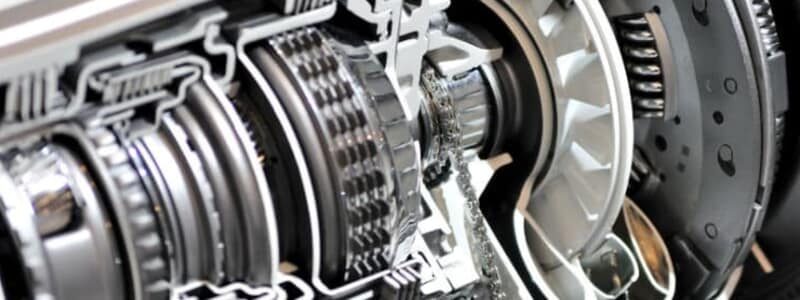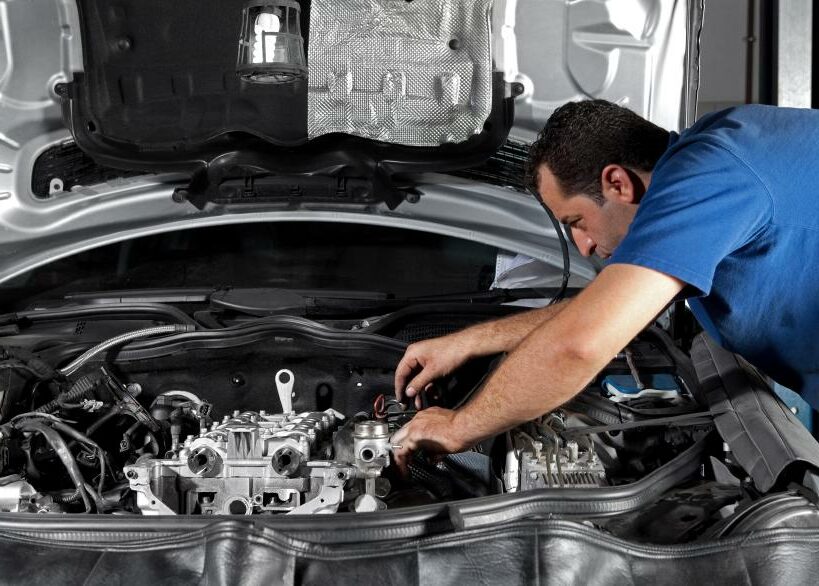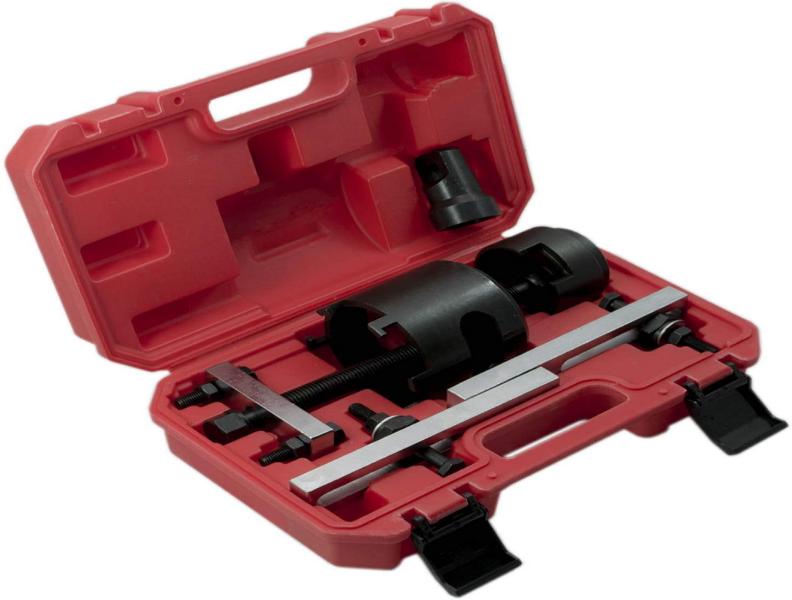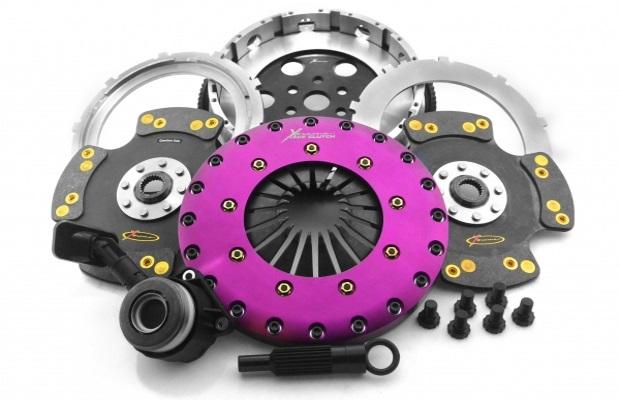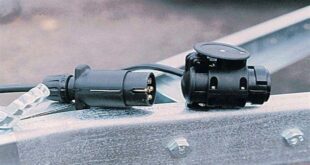Recently updated on January 27, 2022 at 10:36 am
If the clutch causes problems, a specialist workshop should be visited. Despite sometimes high impending costs, the expert should be consulted in order to avoid even higher costs. However, there are some things that can be done to protect the clutch in advance so that the chance of a defect is significantly reduced.
Overview of the topics
 Who is only around for very specific topics
Who is only around for very specific topics
Interested in changing / checking the clutch,
the can directly use the following jump labels
navigate to the desired topic. Likewise comes
from the selected menu item at any time with only
one click back to this overview.
- Changing the clutch is a case for the workshop
- Price example VW Golf
- Further prices for changing the clutch
- How long does a new clutch last?
- What harms the clutch?
- How can the clutch be protected?
- Can the condition of the clutch be tested myself?
- How does the clutch work?
- Coupling changing tutorials
Changing the clutch - a case for the workshop
In order to change the clutch, it is necessary in many vehicles to remove the transmission beforehand. The workshop needs around 4 to 5 hours, of course, depending on the vehicle. In some cases it is even necessary to remove the engine and the transmission together. In such a case, the workload is of course significantly higher and can easily take up to 12 to 14 hours or even more. Together with the material, the total can quickly amount to 1.800 to 2.000 euros and more. It is understandable that the first thought is often whether the dome can also be changed yourself.
However, this requires special tools and, of course, a certain amount of specialist knowledge for almost every vehicle. Almost all cars built after the end of 1996 or later have a self-adjusting clutch. It is also referred to in parlance as the SAC coupling, where the SAC stands for self-adjusting clutch stands. These SAC couplings are supplied preloaded and must be installed accordingly.
Self-appointed experts repeatedly speak up in relevant internet forums. According to them, it is very easy to do it yourself. According to them, the pressure plate is wrapped with wire, screw clamps are used for securing and instead of a guide pin, your own thumb is simply used. Of course, it is possible that it works without special tools. However, a wrong movement means that the integrated adjustment mechanism snaps back to the stop and then cannot be reset. That would mean that the clutch could be fitted, but would fail again after just a few kilometers. That would be because the automatic readjustment no longer works. In such a case it is of course not possible to return the coupling to the manufacturer. Parts suppliers are familiar with the incorrect handling of SAC clutches and exclude this from their warranty. Therefore, in our opinion, replacing the clutch is now a workshop matter. (Back to overview)
Cost of a clutch VW Golf IV 1.4 petrol engine (75 PS)
Here is an exemplary calculation of the costs that arise when replacing the clutch. The VW Golf IV 1.4 petrol engine (75 PS) serves as an example.
- Drive plate: 100 euros
- Drive plate, release cylinder and pressure plate (clutch kit): 300 euros
- Release bearing: 20 euros
- Installation time: 3,6 hours. Here the price depends on the workshop. (Back to overview)
Further prices for changing the clutch
All prices listed below for changing the clutch are only rough guide values (labor costs and partial prices) and include VAT. Of course, the prices can vary significantly depending on the region and vehicle model. And all vehicles are older and in some cases very simple vehicles. The prices for an Audi A6, a BMW 5 Series or a current VW Passat as a manual switch can hardly be compared with the examples.
|
VEHICLE |
COSTS |
|
VW Golf 4 (1J1) |
from EUR 350 |
|
Renault Twingo (C06) 1.2 |
from EUR 280 |
|
Ford Fiesta (CBK) |
from EUR 360 |
|
MINI (R50, R53) One |
from EUR 360 |
|
Opel Zafira B |
from EUR 380 |
|
Peugeot 206 CC |
from EUR 360 |
|
Toyota Aygo (KGB / WNB) |
from EUR 340 |
|
BMW 3 (E91) 320d |
from EUR 350 |
|
Audi A4 Avant (8K5) |
from EUR 360 |
|
Hyundai Getz (TB) 1.1 |
from EUR 420 |
How long does a clutch last on average?
The individual components of a coupling are usually very durable. Therefore problems with the clutch are very rare these days. The greatest load is borne by the drive plate, the surface of which is designed for around 100.000 kilometers. If it breaks earlier, it is either due to a defect in its environment or to the driver himself. The driving profile can also be problematic. If the vehicle is often towing a trailer, this can also affect the service life of the coupling.
Wood and leather were originally used as friction materials. Of course, these had a very limited lifespan. Organic composites and fillers are now used as the lining material for the clutch disks. These serve to improve the coefficient of friction and reduce wear. However, the clutch disks are very sensitive to temperature. They begin to dissolve at a temperature of around 310 to 330 ° C. They are destroyed from a temperature of 440 to 460 ° C. (Back to overview)
What harms the clutch actually?
In general, the coupling is stressed when a trailer, a heavy caravan or a boat trailer has to be pulled. But not only heavy loads are a burden for the coupling. Impatient driving also leads to a short service life. If the car is constantly jerked briefly at a red light, this is detrimental to the clutch. With such a regular overload it will by no means last 100.000 kilometers. The reason for this is that heat is generated when grinding. Driving up a steep driveway with a slipping clutch is extremely harmful. Especially if you encounter this situation regularly. If you live in such a way that you have to slowly drive up a driveway in reverse with the vehicle, have to wait, have to drive off again and again to get onto the road, then this is not an optimal scenario for a long service life of the clutch. Every now and then there is even an acrid smell coming from the hot friction disc. In this case, the temperature of the drive plate reaches the red area, which is a sign of extremely high wear. The flywheel and the pressure plate can also be affected. To protect the material, such maneuvers should be avoided or at least as short as possible. (Back to overview)
How can the clutch be protected?
To protect the clutch, it is important to follow a simple basic rule: Take your foot off the pedal. On the one hand, this means approaching the domes without long grinding. On the other hand, the pedal should be released after every shift. It is especially important that the foot not resting on the pedal. This is what the area next to it is intended for. Because the leg moves on bumpy roads. This moves the clutch permanently. This puts a strain on both the friction disc and the release bearing and is unnecessary. Even a little pressure on the pedal can move the clutch and thus lead to wear. In this case, however, you don't smell it because the temperatures are not so high. The wear is still there and can destroy the clutch over a longer period of time. (Back to overview)
Can the condition be tested yourself?
Because modern clutches are self-adjusting, this is not necessary for customer service. It's convenient. It is inconvenient, however, that their approaching death is not heralded, for example, by a larger pedal game. Only the fact that the pedal feels a little “hard” may indicate that something is wrong. In this case, it begins to slide. Which means that the engine power can ultimately no longer be fully transmitted. This manifests itself in an increase in the engine speed while the car itself is not going faster. In this case, too, an acrid smell can often be perceived. The following procedure is often recommended to test the clutch yourself:
- Park the vehicle on a level, straight surface
- There must be space next to the vehicle
- Vehicle must be idling
- Let the vehicle's engine run
- When the vehicle is stationary, third, fourth or even the highest gear is engaged.
- The handbrake is applied.
- The gas is accelerated and the clutch is released.
The clutch is still good when the engine stops. If the clutch is already heavily attacked, then after this test it can be completely worn out. Or at least it can then be used for a few thousand kilometers less. By the way, stalling at high speed is not only harmful to the clutch, but also to the engine. This provokes timing chains and toothed belts to tear. However, a one-time test is quite practical and you shouldn't be afraid of it. Some vehicle models also offer visual aids on the release mechanism. These indicate the condition of the drive plate. If it is badly worn, you should definitely not continue driving. This will also destroy the flywheel and the pressure plate. Unlike the clutch, the release bearing can be easily checked. If you hear a humming noise when you step on the clutch pedal or if the pedal vibrates, it is usually defective or just before it. Before the release bearing is destroyed, a workshop should be urgently sought. (Back to overview)
How does the clutch actually work?
The clutch is arranged between the engine and the transmission. It is bolted to the flywheel. Both rotate at the same speed. Around 99 percent of car clutches consist of three disks. This type of construction is called a single-plate dry clutch. It resembles a burger, with the flywheel and pressure plate representing the two halves of the bun, while the grater represents the meat in between. We do without cheese, cucumber and ketchup in our comparison! The two outer parts are attached to the crankshaft. They grip the friction disk from the outside and are able to change their distance from one another.
The driver changes these distances with the help of the clutch pedal. When the pedal is depressed, they move apart. Otherwise they lie close to the friction disc. This starts to turn with it. Since it is attached to the input shaft of the transmission, the car drives off. In an average car with 90 to 120 hp, it is compressed with 4500 to 4800 Newtons (approx. 480 kilograms). So it works reliably even at full throttle. Because of the built-in hydraulics, the effort required is low nowadays. A small pump is activated when the clutch pedal is pressed. This pushes fluid in the direction of the working cylinder of the release bearing. This is also referred to as the central slave cylinder, as the two usually form a unit these days. (Back to overview)
Coupling changing tutorials
Change clutch - Toyota Corolla (Back to overview)
Change BMW clutch | slipping clutch E46 330i
Changing the clutch - Audi A3
Change Golf 3 clutch
CHANGE / RENEW CLUTCH AUDI A2
https://www.youtube.com/watch?v=F7KX2STugRw
Of course that had not happened yet!
tuningblog has countless other articles on the subject of car and auto tuning in stock. Do you want to see them all? Just click HERE and look around. In part, we would like to provide you with news but also off the tuning. In our category Tips, products, information & Co We have reviews of car or accessories manufacturers, new ones Tuning Wiki Terms or one or the other Leak veröffentlicht. Following an excerpt of the last articles:
|
Direct and indirect vision: avoiding accidents caused by blind spots |
So that the electricity flows on the trailer - the connection adapter! |
"Tuningblog.eu" - we keep you up to date on the subject of car tuning and car styling with our tuning magazine and we present you the latest tuned vehicles from all over the world every day. It's best to subscribe to ours Feed and will automatically be informed as soon as there is something new about this post, and of course also to all other contributions.
 tuningblog.eu Your magazine about tuning the car
tuningblog.eu Your magazine about tuning the car
